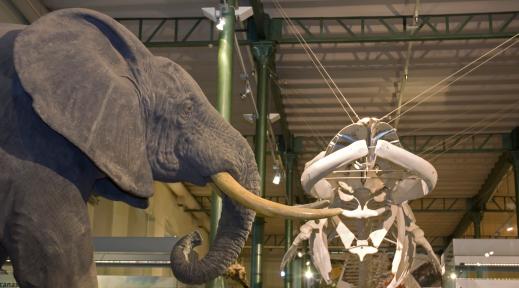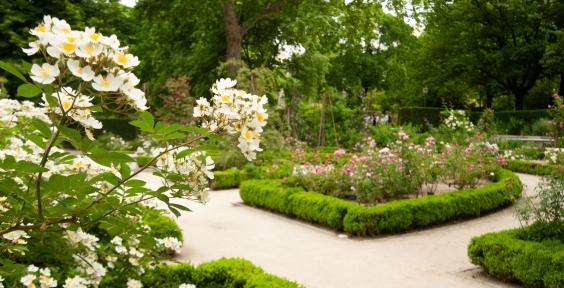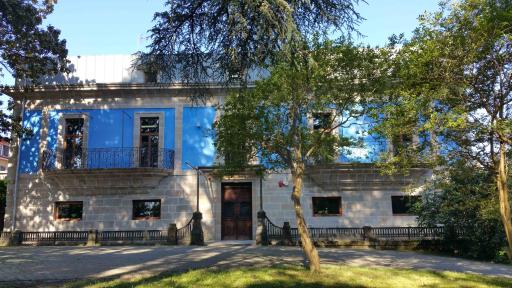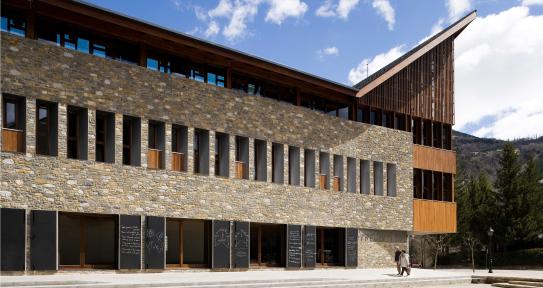Museo Nacional de Ciencias Naturales
The Museo Nacional de Ciencias Naturales (MNCN) was created by the King Carlos III in 1771 as a Royal Cabinet of Natural History. Today, in addition to being the most important Natural Sciences Museum in the country, it is a research centre specialised in areas ranging from paleo-biology and geology to ecology and climate change or environmental biology and biodiversity. The museum parti¬cipates, in conjunction with the Real Jardín Botánico, and twenty other museums of natural sciences, universities and botanical gardens, in the project SYNTHESYS (ES-TAF), an European integrated infrastruc¬ture for researchers in natural science. Through it, it funds the conservation of scientific natural history collections of great relevance for the whole of Spain.
The MNCN collections were visited by more than 1000 people for research, cataloguing and identification purposes as well as for master’s degree internships. Among these collections, it is worth to highlight the entomology collection that was the subject of 41 publications and that is the collection which hosts the greatest number of specimens with 4,5 million samples.

Real Jardín Botánico
The Real Jardín Botánico (RJB) is a living museum and a centre for research and for the popularisation of botanical science. It was founded in 1755 by Fernando VI and since 1781 it is located on Paseo del Prado (Madrid). The garden was designed by the royal architects Sabatini and Villanueva. Its mission is promoting knowledge and the conservation and enjoyment of plants and its environment. This mission is carried out through the scientific research in plants and fungui, the exhibition of live plants and herbariums, and the development of educational programmes for all publics regarding the plant world. The main lines of research are:
- Systematics of vascular plants: floras and mono¬graphs.
- Plant evolutionary biology: patterns, processes and mechanisms.
- Fungi and bryophytes: biodiversity and conserva¬tion biology.
- Ecology: conservation of aquatic macrophytes and global change.

Casa del Chapiz de la Escuela de Estudios Árabes
Casa del Chapiz is the headquarters of the Escuela de Estudios Árabes (EEA), which belongs to the CSIC. It is formed by a set of two Moorish houses declared Site Cultural Interest. Its origins date back to the 14th century, and it is located in the neighbour¬hood of Albaycín in Granada (listed as a World Heritage Site by the UNESCO), where the Cuesta del Chapiz and the Camino del Sacromento come together. The research work of the institution is focused on the study of Andalusian history and medieval texts and on Islamic archaeology and architecture.

Institución Milá y Fontanals
The Institución Milá y Fontanals (IMF) was created in 1968 with the aim of bringing together the CSIC centres or units devoted to research in the Humanities. It is located at the centre of the city, at the historical building of the CSIC Delegation in Cataluña (Calle de las Egipciacas), inaugurated in 1954 and currently shared with the Residencia de Investigadores del CSIC and the Generalitat de Catalunya. Among its great patrimony, it is worth to highlight a Baroque-style organ and a harpsichord from the Musicology Department which are available to be played at concerts. Since its creation, the institution has realised a noticeable contribution to the historical, cultural and social knowledge in its fields of study (Archaeology, Science History, Medieval History, Classical Philology, and Musicology) with special attention to the international dimension by stablishing numerous agreements with foreign research centres.

Misión Biológica de Galicia
The Misión Biológica de Galicia is ascribed to the area Life. It is located in the province of Pontevedra. It is focused on focused in the main crops in Galicia and works in the phytogenetic resources’ conservation and characterisation; and improvement, genetics, and resistance to stresses of maizes, beans, peas brassicas and woody species of vines, pines and oaks. The Misión was founded by the Junta para Ampliación de Estudios in 1921. Since 1928, it is located at the parish of Salcedo inside the Pazo de la Carballeira de Gandarón, a building constructed at the end of the 18th century by the archbishop of Santiago at that time, Santiago D. Sebastián Malvar y Pinto, also known as the Arzobispo constructor. Since 1970, the facilities and laboratories are placed in a new building designed by Alejandro de la Sota.

Finca Experimental La Hoya (FEH)
The Finca Experimental La Hoya (FEH), is a special CSIC installation. It is a service and support unit of the Arid Zones Experi¬mental Station (EEZA). It has a bank of genetic resources, outdoor aviaries and animal houses, greenhouses, a visitors' centre, and facilities for the management of four European captive breeding programmes for ungulate species from the north of Africa which are in danger of extinction (Nanger dama mhorr, Gazella cuvieri, Gazella dorcas, Ammo-tragus lervia). With these programmes, the CSIC is represented in the most important zoological projects in Europe, which collaborate with our institution to prevent the total extinction of these species. In recent years, the coordination of various reintroduction programmes for ungulates in Senegal, Morocco and more recently in Tunisia has taken place. They aim was to introduce these species in their natural habitat, where they had disa¬ppeared, in order to obtain genetically and demogra¬phically viable populations in the long term.
Residencia de Estudiantes de Madrid
Founded in Madrid in 1910 by the Junta para Ampliación de Estudios, the Residencia de Estudiantes was the first cultural centre of Spain until 1936, remaining a vibrant, fruitful hub for scientific and artistic work and exchange in Europe during the interwar period. Its mission is the recovery and dissemination of the records of the Edad de Plata (1868-1936) as well as the latest trends in different areas of knowledge and specially in science. Each year the Residencia hosts more than 3,000 researchers and professionals of different disciplines coming from across the world. Its documentation centre keeps and makes available to the public a unique collection of documents. It develops diverse research projects and has its own publishing company, which publishes several volumes each year and organises numerous public events and exhibitions, accessible to everyone.

Residencia de Investigadores de Barcelona
The Residencia de Investigadores CSIC-Generalitat de Catalunya is a public consortium created in 1993 between the two entities and inaugurated in 1998. It is located at the district of Ciutat Vella in Barcelona. Since then, it offers an accommodation service for teachers and researchers during their visits in Barcelona and also it provides spaces in which scientific and cultural activities are organised aiming to foster reflection and dialogue.
Since its creation, 8,385 speakers have presented their work and knowledge in the residence, events which have been attended by about 105,000 people. Its facilities have hosted close to 328,000 people.

Centro de Ciencias de Benasque Pedro Pascual
The Centro de Ciencias de Benasque Pedro Pascual (CCBPP) is a facility for the Spanish scientific system. This centre offers the possibility to organize international meetings in Benasque, a beautiful village located in the heart of the Pyrenees. Since July 1999, the centre is governed by a non-for-profit with a separate legal entity. Until 2018, the centre has hosted 211 sessions in which have participated 12,262 assistants from 76 countries.

Casa de la Ciencia de Sevilla
The Museo Casa de la Ciencia de Sevilla is a CSIC centre for scientific outreach located in the old Pabellón de Perú (Ibero-American Exhibition of 1929) on the scientific/cultural axis of the Jardines de San Telmo gardens in Sevilla. The museum shows permanent exhibitions on some of the most universal topics in science, such as marines species or the many geological changes in Earth. Also, it offers a permant installation, the Planetario, which uses a wide array of projections aimed at all publics to bring closer the celestial bodies.
